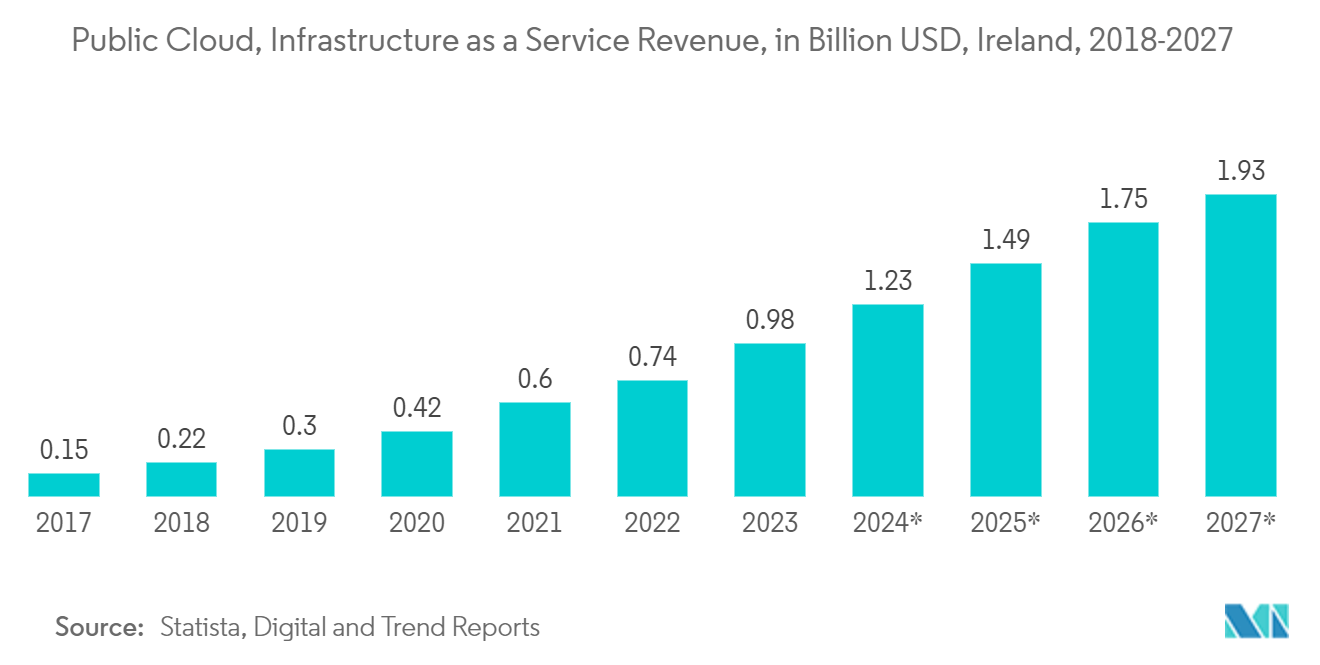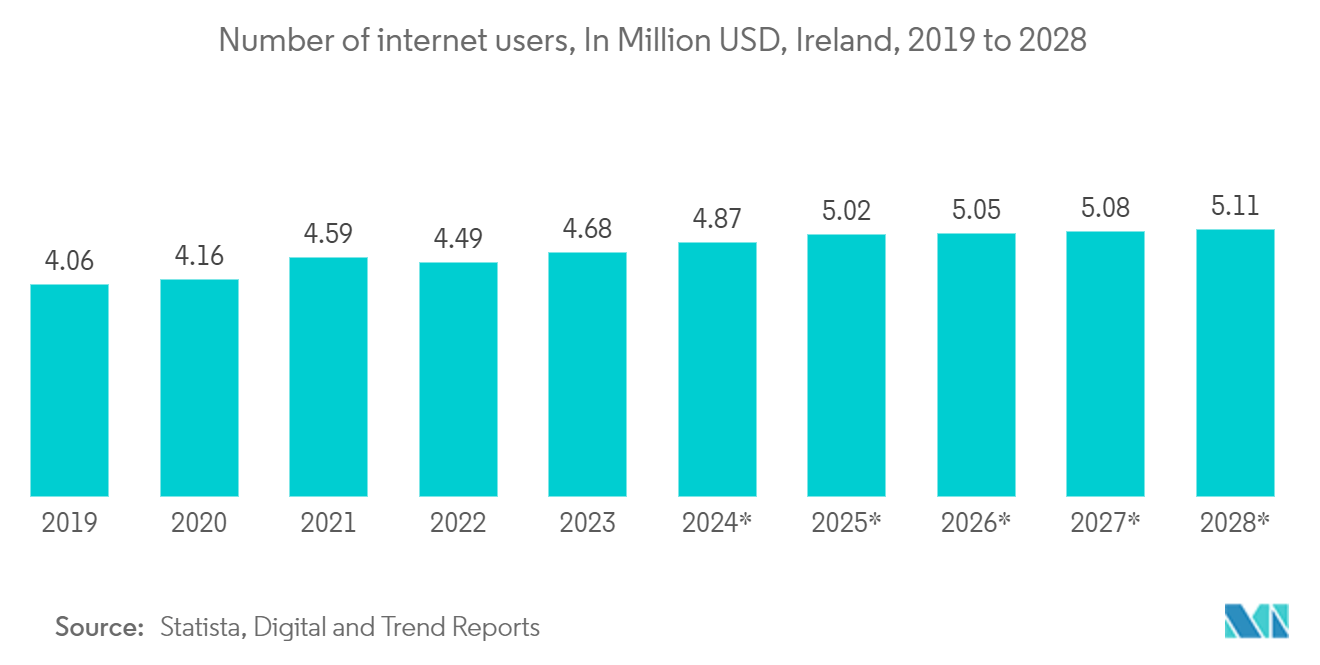Market Trends of Ireland Data Center Cooling Industry
IT & Telecommunication Segment holds the major share.
- The market in Ireland has been driven by increasing cloud usage across major enterprises as a result of advancements in technology. An industry survey suggests that a 10% increase in cloud adoption by the Irish public sector could yield economic benefits of EUR 473 million (USD 501.5 million) annually.Consequently, proximity to cloud service providers (CSPs) has become a critical factor for businesses when selecting a data center in their local market. As a result, Dublin has emerged as a cloud computing hub, hosting major cloud providers such as Microsoft, Google, Amazon Web Services, and IBM.
- Online marketing is also driving the growth and demand of this segment as more audiovisual content is launched on social media platforms and shopping websites as part of digital marketing efforts. Digital advertising spending in Ireland saw a steep rise, from EUR 575.2 million (USD 625.4 million) in 2018 to EUR 830 million (USD 902.5 million) in 2021, highlighting the significance of cloud technology in the digital marketing segment. These factors further support the growth and demand for data computing facilities within the cloud segment.
- The technology, media, and telecoms (TMT) sector in Ireland contributes around 13% to the country's GDP. However, the market share of this sector is anticipated to decrease from 19.04% in 2022 to 13.06% in 2029. Building wireless networks in Ireland has long been a challenge for telecom operators. Nonetheless, significant infrastructure projects are underway, including the NBN, which aims to deliver a fiber-based service with at least 150 Mb/s nationally in the coming years. As operators work to enhance capacity with 5G deployment, their network strategy is evolving to include greater use of spectrum in higher frequency bands.
- Such developments, the growing urban population, and the ongoing demand for the cloud are, in turn, expected to boost the demand for the data center market from the IT and Telecom segment, leading to major demand for the cooling infrastructure during the forecast period.

Liquid-based Cooling is the fastest growing.
- In data centers, liquid cooling offers many benefits, and it is an attractive option to cool computing environments with high performance. The use of liquid cooling has been shown to be more energy efficient compared with conventional air conditioning. It reduces the need for overcooling and improves the energy efficiency of data centers by providing precise temperature control.
- Technological advances have helped to reduce the data center's water consumption by more than 15% in tropical climates and 80% in green areas, making liquid cooling easier to maintain, scale up, or be affordable. Energy used for liquid cooling may be recycled to heat buildings and drinking water, while advanced artificial refrigerants can significantly reduce the carbon footprint of air conditioners.
- Liquid cooling takes advantage of the space constraints and superior heat transfer properties of water or other liquids to provide efficient and cost-effective cooling of high-density racks up to 3000 times more efficiently than air. Long proven in mainframe and gaming applications, liquid cooling is increasingly being used to protect rack servers in regional data centers. For instance, Ireland's largest university upgrades its data center cooling system with Schneider Electric Uniflair InRow DX Cooling Solution that resolves reliability, scalability, and space constraints.
- Furthermore, Ireland underwent a remarkable transformation in digital government services between 2021 and 2022. E-government users increased from 67% of internet users to 92%. The public service comprises a diverse range of government entities. The portal currently links to over 8,800 datasets from approximately 100 publishers. Overall, the government is launching a new EUR 85 million (USD 100.3 million) fund to help businesses progress in their digital journey and develop new products, services, and processes. Such improvements in the market are expected to create more need for data centers, resulting in rising demand for data center cooling infrastructure manufacturers in the coming years.


